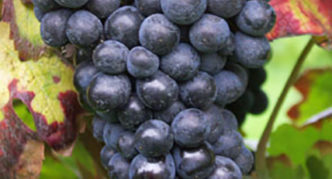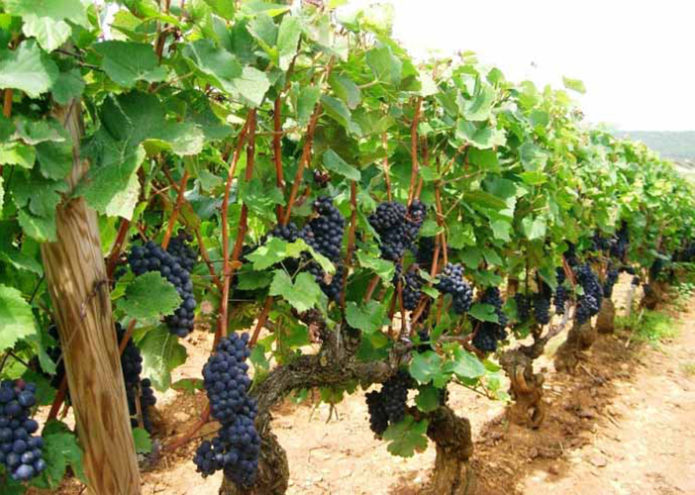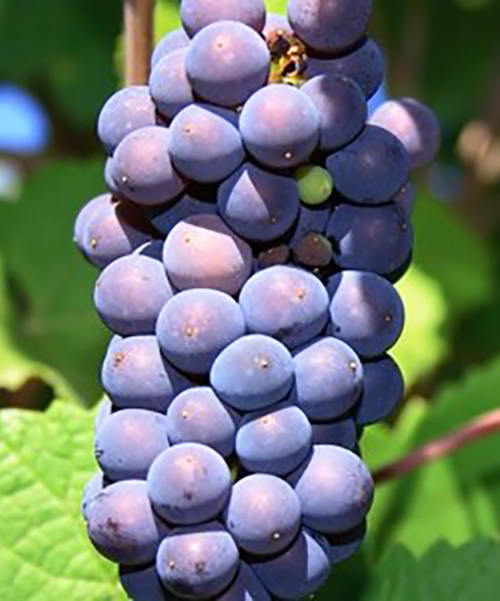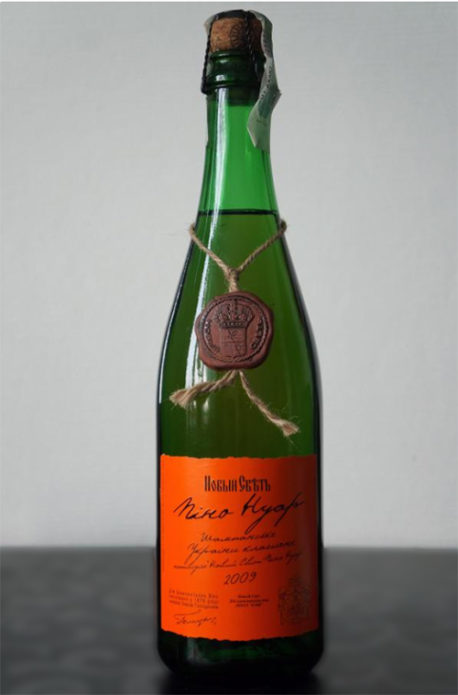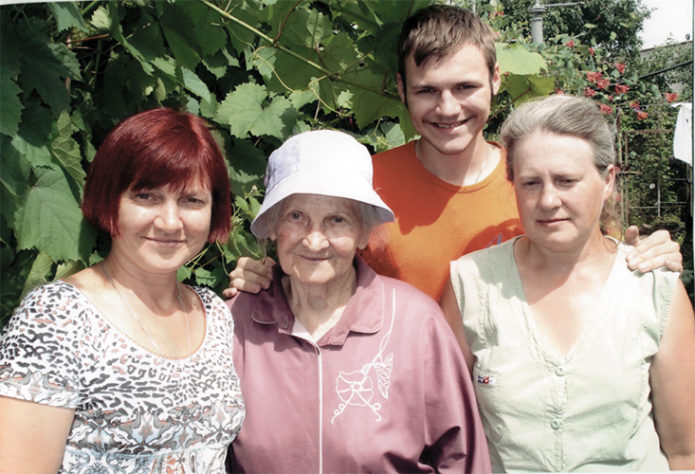The famous French grape variety Pinot Noir is known not only to gardeners and lovers of a sunny drink. Who does not remember the three Musketeers of Alexandre Dumas, who, together with all the other heroes, drank Burgundy throughout the entire story. This wine is still highly regarded by connoisseurs for its unique delicate aroma with many different shades. And red Burgundy is made from Pinot noir grapes. There will be a story about him and his wandering around the world.
Content
Gift of the land of Burgundy
The land of the historical region of eastern France, which in French is called Bourgogne, gave the world this little miracle - the Pinot noir grape or Black Pinot. It is so old that a genetic examination had to be done to determine its origin. After analyzing the DNA of this grape variety, scientists agreed that its parents are most likely Traminer grapes and one of the clones or seedling of the Pinot Meunier variety.
Pinot noir and his ancestors - photo gallery
- Pinot noir (Pinot noir)
- Traminer
- Pinot meunier (Pinot meunier)
The grapes, predecessors of Pinot noir, are mentioned in documents of the 4th century, and the variety itself is named in the monastic documents of the 14th century as the main one for making wine.
The fame of Burgundy wine led to the fact that over time, Pinot noir grapes began to be grown not only in France, but also in many countries with cool temperate climates - Austria, Germany, Switzerland, Italy, the Black Sea countries. Pinot noir stepped across the oceans to the United States, Argentina, Japan, and New Zealand. He has many synonymous names: Blau Burgunder (Blau Burgunder), Franc Pinot (Pinot fran), Shpachok, Pinot black, Pinot black, Blauer Spatburgunder (Blauer Spatburgunder), Petit Plant dore (Petit Plan dore), Pinot negru, Okrugla wound.
Only from grapes grown on other lands and under different weather conditions, the wine in each case turned out to be different from the real Burgundy. Indeed, among the French versions of Pinot Noir wines, in one case it has a complex floral aroma of roses and fruits, and in the other - the smell of fresh hay, wet leaves, moss, pine needles and even a barnyard, which amateurs appreciate no less.
Surprises of light and refined, not at all dark, but strawberry-red Pinot Noir wine:
- North American Pinot will present a wave of successive aromas;
- New Zealand - without rural odors, but also with a rather complex bouquet;
- the cold and austere taste of German Pinot surprises with an airy and light bouquet;
- South African smells like jam or jam;
- Chilean smells of menthol, spices, chocolate;
- Russian Pinot can make you forget about elegance and subtlety, being berry-perky and light or saturated with stylish notes of horseradish.
Grape growers explain this by the difference in the soil on which the grapes were grown. And the climate is different everywhere. Pinot noir ripens in some places in 130 days, and in others in 150 days. The required amount of active temperatures - 2670-2800 ºС.
When the shoots freeze, this grape variety awakens dormant buds from which new shoots grow, in a year you can harvest again.
Pinot noir in our area
Domestic winegrowers could not help but try to grow Pinot noir here. The state register in the middle of the last century was replenished with three Pinot varieties - black, gray and white. The originators of the last two are not registered, and the black Pinot was created at the OSS VIR in the city of Krymsk, Krasnodar Territory. All three varieties, although they ripen in the early stages, have low winter hardiness, are susceptible to diseases and pests, and have a simple taste. All of them are recommended for further testing in the North Caucasus.
Crimean Pinot fran
In the west of the peninsula, in the foothills and partly in the steppe regions (from Balaklava to Lake Donuzlav), this Pinot noir clone, which matures for about 150 days, is grown as a raw material for champagne. Its slow growing bushes and shoots produce small inflorescences with bisexual flowers. Medium-sized, with one small wing, rather dense bunches consist of small black berries covered with gray purine. They have an ordinary taste, slightly tart, without a pronounced aroma. Pinot fran juice is colorless.
Weak growth of bushes allows planting them more densely: at a distance of 1–1.25 meters between bushes in a row with a two-meter spacing. Pinot fran is quite drought tolerant and grows well on slopes. When grown in flat areas or lowlands, flowers are prone to active shedding.
The growing season of grapes begins in late March - early April, so it is often damaged by spring frosts, although it tolerates the winter well. Medium resistance to fungal diseases. Grapes ripen in mid-September, accumulating about 20% sugar and 0.8–0.9% acids. To use grapes as raw materials for champagne wines, they are removed from the vine a little earlier, usually at the beginning of September, when the sugar content does not exceed 17-19% and the acidity is about 1%.
Pinot fran gives low yields, since the fruitfulness of the shoots is very uneven. The shoots of the three lower nodes are the least productive, therefore, when pruning, 6–8 eyes are left, and the operation is performed in the spring, when the threat of frost has passed. Despite the low yield of Pinot Franc, it is grown to be added to other wine materials in the amount of 15–20%, which significantly improves the taste of champagne.
Early Pinot or Michurinsky
The Shtins, famous breeders from the Central Genetic Laboratory in Michurinsk, Tambov Region, worked on breeding this Pinot Noir clone.
Variety testing in the Voronezh region was conducted by hereditary winegrower Ivan Levin.
Pinot Michurinsky or early is a versatile fruitful grape with increased resistance to diseases and resistance to winter frosts down to minus 30º Celsius, at lower temperatures it must be covered for the winter. According to the observations of winegrowers, the ten-centimeter shoots of this clone tolerate the night spring cooling down to -3º without damage. Shoots ripen well.
The ripening period of the berries of this Pinot clone in the Michurinsk region is 125 days from the time of budding. Thanks to this, Pinot early can be grown in the northern viticulture zone.
The clone has a small growth force, when formed in the form of a one-sided fan, it can be planted at a distance of a meter between bushes in a row and with a two-meter row spacing.
The flowers of Pinot Michurinsky are bisexual, the clusters are small, but three of them are formed on the shoot, so the harvest must be rationed so as not to overload the vine. Dark blue oval berries, covered with a thick layer of purine, have a firm skin and juicy flesh. The content of sugars (mainly glucose) is up to 23% at low acidity. The grapes can be consumed fresh or processed into juices and quality wine.
A peculiarity of the variety is the appearance of flowering brushes on stepchildren all summer. They can be harvested in mid-September.
Black sweet or Pinot black
This clone was bred by free pollination of Pinot noir and further selection of the most successful seedlings. Black Pinot is one of the fastest ripening grape varieties that successfully overwinter without shelter, and therefore are used for landscaping. It takes 110–130 days for the Black Sweet to ripen, for the sum of active temperatures to be from 2000 to 2600 ºС.
The bushes of this clone are of medium height. The flowers are bisexual, they not only pollinate well themselves, but also contribute to the improvement of this process on the vines of Madeleine Angevin and Malengra, with which the flowering period coincides. Bunches of Black Pinot produce small to medium-sized, like berries. The dense skin of the grapes is dark blue with a purine bloom. The pulp is juicy and tender, sour-sweet, has no aroma. Black Pinot juice, unpainted, light. It is prone to downy mildew disease.
Pinot noir and its repetitions
It is simply incorrect to compare Pinot noir with any other varieties. It is special and unique. Even with his own clones, there are similarities and differences.
All Pinot noirs, no matter how they are called:
- have bisexual flowers and are well pollinated;
- give small bunches and berries;
- require a short or relatively short period to ripen;
- their inner flesh and juice are uncolored, despite the dark skin;
- susceptible to a greater or lesser extent to fungal diseases and pests.
| Pinot noir | Early pinot (Michurinsky) | Pinot black (Black sweet) | |
| The power of growth | average | small | average |
| Appointment | technical | technical | technical |
| Ripening period (days) | 130-150 (depending on the growing area) | 130–140 | 130–135 |
| Sum of active temperatures (ºС) | 2670–2800 | 2500–2650 | 2500–2700 |
| Flowers | bisexual | bisexual | bisexual |
| Bunch size (cm) | 7-12 x 5-8 | 9x7 | up to 15x12 |
| Bunch weight (g) | 70–120 | information not found | 120–240 |
| Berry weight (g) | small, information not found | small, information not found | 1–1,3 |
| Sugar content (average,%) | 21,4 | 23 | 20–21 |
| Acid content (average, g / l) | 7,7 | information not found | 7–8 |
| Hectare yield (average, t) | 5–6 | until 6 | 10 |
| Stability: to powdery mildew to gray rot to phylloxera to chlorosis | average low 6-8 years old subject | average average information not found information not found | average low information not found information not found |
| Winter hardiness | relatively high, the yield is restored after a year from the replacement buds | -23–30 | in a non-covering culture at -20 ºС, up to 30% of the eyes die |
As can be seen from the data that were collected on the network, the cloning of Pinot noir made it possible to obtain a higher yield of grapes, led to a slight decrease in the required CAT, the size of the bunches, and in the case of Pinot early - a certain increase in the sugar content in the berries. However, so far it has not been possible to overcome the varietal susceptibility of grapes to powdery mildew. Pinot Michurinsky has gained a certain distribution among winegrowers of the northern regions.
Pinot noir grapes (video)
Winegrowers reviews
It is so accepted that for high-quality wine, on the Pinot noir variety, the yield should be regulated, reduced. The French leave only 2-3 clusters of grapes on the Pinot Noir bush, but wine from such grapes is highly valued, and justifies such a cultivation technology. At Pinot Michurinsky, the harvest can be left unregulated, especially in the production of cognac. This variety can withstand heavy loads without reducing sugar and has no negative effect on the ripening of the vine. Only full load should be given after the fourth year of fruiting.
All Pinot noirs, the juice is not colored, so it is possible to make not only red, but also white wines from them.
I have been growing a small plantation of Pinot Noir (20 bushes) in my country house for 10 years already. I fell in love with the variety when, while working as a winemaker at a local winery, I first tasted wine from it. Yes - the yield is not high, but acceptable.This affects the quality of the wine for the better. The variety loves watering and fertilization. In spring it responds very well to nitrogen. If not added, it grows slowly and the bush is very weak. During all this time, I have not been ill with anything, but I carry out prophylaxis regularly. Also, once a week, all summer I spray very small doses of zirconm, gummate + 7, in cold spring and in the heat with epin a couple of times. I'll tell you about wine again. Magnificent !!! But I have a micro-region in the foothills, and the influence of the mountains has a positive effect. I was just guessing with the place for this variety. True, every year the wine is different, but very, very good! In general, I am happy with this variety and made it the main one.
With Pinot noir, not everything is so simple, a lot of clones, different ripening periods, yields, etc. Mikhail Aleksandrovich also has "Pinot Michurinsky" (I put it in quotes so that they don't swear), maybe he meant it - this one really ripens early.
It is not easy to grow Pinot Noir, but all its "whims" are fully compensated by the quality of the fruit. Winegrowers interested in this grape variety, perhaps, should study the wide palette of its current varieties - clones and hybrid forms, choose the most suitable for growing in a particular area and corresponding to the needs and goals of the gardener.


